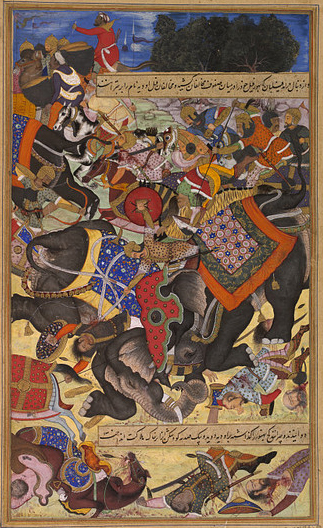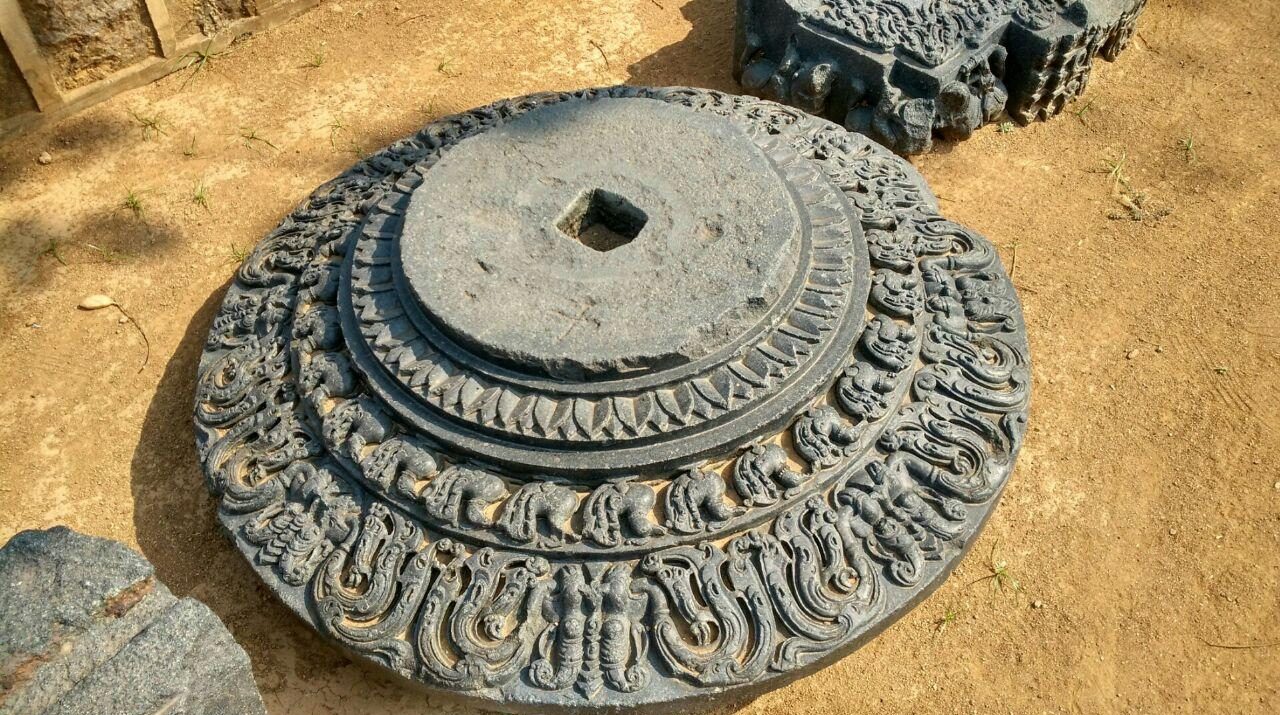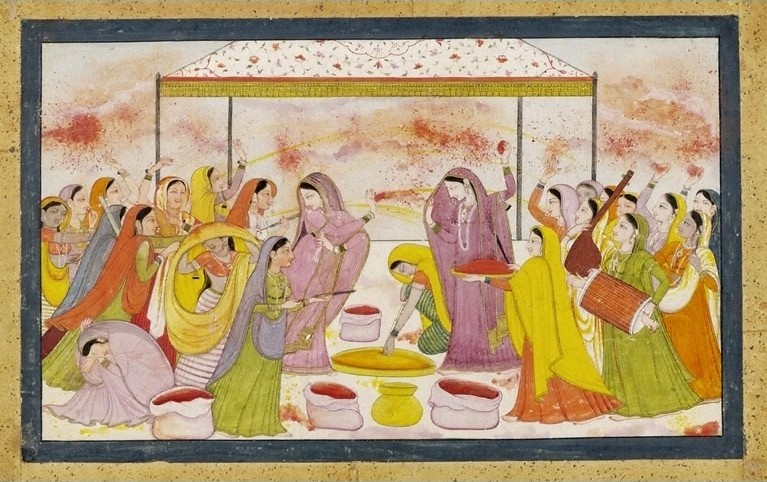#Didyouknow that elephants have played a major role in the mythology and history of India? The use of the animal has been documented via sculptures, historical researches and miniature paintings. Though it is true that horses and camels were also part of royal entourages to draw vehicles and carry goods, the elephant was used in warfare, hunting expeditions, for executions, entertainment, in processions, for gifts and a display of prestige. Elephants have depicted in the Ajanta murals. The scroll decorations at the base of many temples in India using the elephant motif. Many fort remains of India still have the elephant stables intact. Discover the depiction of these awesome pachyderms in Indian paintings made during the medieval and late medieval times !

Battlescene from the Mahabharata, Kangra painting, 1800s.
The elephant is a beloved animal in India. Many schools of painting have depicted this animal which is symbolic of mountains, clouds,heaven, rainfall and prosperity. The God Indra in Indian mythology has the elephant Airavata as his mount. Goddess Lakshmi as Gajalakhsmi also is associated with the elephant, gaja, meaning elephant. Lord Ganesha, a favourite deity from Indian mythology, has the head of an elephant. The events from the Indian epic Mahabharata have been captured by the Kangra artists, one of the Pahari school of paintings. The battlescene at Kurukshetra is depicted and can see the elephants as part of the cavalry.

Arjuna’s son Abhimanyu of the Pandavas fights Dushashana of the Kauravas in the Mahabharata battle, Kangra painting, 1803 A.D.
However it was the artists at the Mughal atelier who celebrated the presence of the royal elephants. Persian painters trained the Hindu artists during Emperor Akbar’s reign (1556 – 1605). They captured them in action, as standalone depictions, in various stances like fighting which was a sport, with Kings on their back and a mahout sitting on them. The elephants had names like Khushi Khan was Emperor Akbar’s first elephant. Another elephant Dilsankar is associated with him. A elephant called Damodar was gifted to Bairam Khan. Emperor Akbar was a great lover of elephants who tamed the elephant Hawa’i known to be temperamental. He had 101 personal elephants in his stables. The Rajput courts like Kotah, near Bundi, were influenced by Mughal art and the rulers commissioned artworks by both Hindus and Muslims which depicted elephants. Emperor Jahangir had an elephant called Gajraj. Emperor Aurangzeb confronted Sudhakar in 1633. Bahadur Shah Zafar had an elephant Maula Baksh who fought in the war of 1857 A.D. The Deccan courts had in their ateliers Mughal artists among others who have made remarkable paintings of the elephants of the Sultans.

Emperor Akbar on his elephant Hawa’i, chasing another Ran Bagha, across a collapsing bridge of boats, 16th century, V and A Museum, London.

War elephants, Chitranand and Udiya collide in battle, folio from Akbarnama, 16th century, V and A Museum, London.
Prince Salim (later emperor Jahangir) with Emperor Akbar returning from a hunt, on an elephant, early 17th century, Art Gallery of New South Wales, Australia.

Elephants as depicted in the Padshanama, a chronicle of Mughal Emperor Shahjahan, 17th century, British Museum, London.

Prince Aurangzeb tackling elephant Sudhakar, Padshanama, 17th century, British Museum, London.

Sultan Ibrahim Adil Shah II of Bijapur on his elephant, Atash Khan, early 17th century, School of Ali Riza, Bijapur.

Sultan Ibrahim Adil Shah II of Bijapur from the Deccan on his elephant Atash Khan, painting by Farrukh Beg, 17th century, Met Museum, New York, U S A.

An elephant in battle, Kota, Rajasthan, mid 18th century.

Fighting elephants, Kota, Rajasthan, 19th century.
Elephants are actually massive pachyderms who show a certain grace as they move and have a unique intelligence with a charming playfulness; have been decorated with ornaments and embellished textiles over the ages. The jhul (saddle blanket) and seeri (head-dress) are commonly seen. Elephants are a part of religious and some other processions in India, even today in the 21st century. Their bodies are painted decoratively along with trappings like the jhul and tinkling bells. The use of elephants represent pomp and ceremony since yore.
References
- wikipedia.org
- sahapedia.org/elephant-regalia-living-tradition
- ranasafvi.com/mughal-elephants/
- Images are via Wikimedia Commons
- smb.museum/en/exhibitions/detail/elephant-stories
Posted by:
Soma Ghosh
©author









